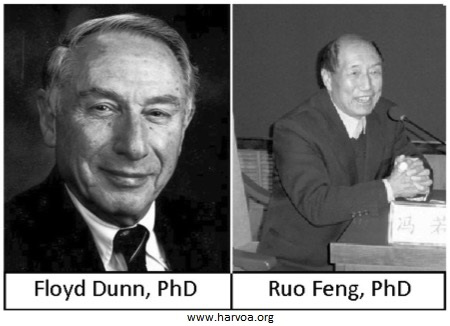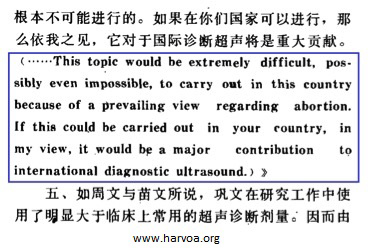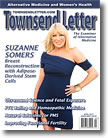Page 1, 2, 3, 4
Recent Studies
It is generally agreed among main-stream experts that ultrasound has the potential to produce harmful biological effects in the fetus. For example, the WHO Criteria describes risks as determined by animal and cell studies. However, because these risks have not been confirmed by human studies, the practice of DUS continues, as the FDA definitively declared, in 2013:
Although laboratory studies have shown that diagnostic levels of ultrasound can produce physical effects in tissue, there is no evidence from human studies of a causal relationship between diagnostic ultrasound exposure during pregnancy and adverse biological effects to the fetus.36
Paradoxically, funding for animal and cell laboratory studies has virtually disappeared since the allowed machine levels were raised 8x in 1991. Evidence? Try to find a modern dose/response study in the Euro-American realm that was conducted after 1991. There are few. I found only four such studies, and they all indicate ultrasound to be considerable risk: Stanton (2001),37 Ang (2006),38 Krasovitski (2011),39 and Hočevar (2012).40
Stanton (2001), a mouse study, found increased cell death in the intestine at medium intensity DUS.41 Funding for continuation to find lower thresholds was declined.42
Ang (2006) caused public concern when it reported dysfunction of neuron migration in the brains of mice fetuses, caused by low intensity DUS. The senior author, Pasko Rakic, was interviewed on PBS. He is a prominent neuroscientist at Yale University. The mouse study was played down without any apparent objection from Rakic. Later, in 2010, it was rumored that Rakic received funding for continuation in the form of a monkey study, and that the study was then quietly discontinued without an explanation.43 The funding was reported to be $3,000,000.44
Hočevar (2012) is a high-tech rat study designed to approximate the human fetal scenario for DUS exposure. It studies cellular gene expression following low intensity DUS exposure. It unexpectedly found bioeffects similar to Xray exposure, i.e., the gene Gadd45a was several hundred times differentially expressed. Given that ultrasound radiation is not categorized as ionizing radiation (e.g., Xrays), this was previously thought to be impossible.
Hočevar (2012) inadvertently and indirectly supports the earlier research of Doreen Liebeskind, MD, at Columbia University, as follows. Liebeskind (1981) is a cell study designed to be relevant to both clinical DUS and Xray exposure. Ultrasound damage was identical to Xray damage as observed under an electron microscope. When the results were extrapolated to a typical clinical session, they indicated an equivalent risk of 250 chest Xrays.45 A chest Xray in 1981 was much higher intensity, i.e., much more destructive than present-day.
Liebeskind (1981) is thus even more relevant to present-day clinical sessions. Damage was permanent, heritable through cell division, demonstrating like Cachon (1981) that DUS exposure could conceivably affect many human generations. This is discussed in the WHO Criteria as a reason not to endorse routine DUS.
Krasovitski (2011)46 presents a sensitive mathematical model for ultrasound damage. This study reviews many experiments including its own experiments to develop its model. Cellular damage was found at intensities 38x less than the FDA guideline of 1.9 MI (Mechanical Index).
Looking for the industrial defense to Krasovitski (2011), I discovered that immediately after the study was published, the NIH funded a paper by Charles Church, PhD, which attempts to refute Krasovitski (2011) and defend the FDA.47
The oversight scientist for Krasovitski (2011) is Eitan Kimmel, PhD, professor of biomedical engineering at the prestigious Technion Institute in Haifa, Israel.
Church never contacted Kimmel to discuss his objections.48 Church's paper consists largely of copy-pasted material with some old-school argument interspersed, and it ignores the Kimmel's supporting studies. Church cites six references. Kimmel cites 39 references. An updated version of Kimmel's study cites 45 references with several new experiments that support its risk model.49
Surprise: Hazards Confirmed
In early 2013, I began my research for undeniable documentation. My motivation was due to my inability to convince people of DUS hazards with the existing critical material. There is also a general inability. For example, Emma Ashworth of AIMS-UK50 relates a story of her mother, an experienced midwife who spoke to all of her clients about the hazards of DUS. All accepted DUS except for one.
After several weeks' study, I found, as described by the FDA and D.L. Miller, that the mainstream allows only human studies as definitive evidence. I then used a working theory, that somewhere there must be a study that used a type of chromatography called "electrophoresis" to reveal ultrasound damage. This sensitive technology uses electric currents to enhance chromatographic analyses of biochemical compounds. For example, crime labs use electrophoresis to analyze DNA samples gathered from crime sites.
I wrote to ultrasound scientists, asking if they knew of an electrophoresis study, and I received no answer. I assumed there was no such study.
I persisted and eventually found J. Zhang (2002).51 Not only was this an electrophoresis study, but it was a human study. Big Bonanza!
Through its references, I was then able to assemble a large number of arcane studies from the emerging online Chinese databases. I worked to gain an understanding of ultrasound science, to be able to evaluate and defend the studies from industry and plagiaristic corruption. I assembled my material as a book containing the new bibliography with extracts, commentary, illustrations, graphs and tables. I rewrote the book as a more formal version, keeping only the essentials with negligible speculation, shock, and angst. The book was published under the title, 50 Human Studies Indicate Extreme Risk for Prenatal Ultrasound: A New Bibliography.
Unknown to Western scientists and the public, the hazards of ultrasound to the human fetus have been confirmed in China since the late 1980s. This involved approximately 50 human studies, over 100 scientists, and 2,700 pregnant women (maternal-fetal pairs). These women were volunteering for abortion. Before abortion, they were exposed to carefully controlled DUS exposure levels, relevant to the clinical scenario. The studies were conducted over a period of 23 years, with the last, found so far, published in year 2011. These studies analyze abortive matter via electron-microscopy and biochemical assays.
This book is an unprecedented East-West bridge, bringing essential arcana, the unknown Chinese Human Studies (CHS). Pardon my enthusiasm.
The CHS now allow us to say the previously unthinkable: Human in utero exposure studies are the most prevalent form of modern ultrasound science.
In this context, with the CHS and other appropriately designed studies, it would seem impossible that the practice of DUS could continue without major adjustments to protocol and machine settings.
The CHS began in 1988 with the disclosure of a study of DUS bioeffects on human embryos. This presentation occurred at a convention in Washington D.C. sponsored by the World Federation for Ultrasound in Medicine and Biology (WFUMB). With reference to the human studies, several Chinese scientists were presented an award during a special ceremony: Xin-Fang Wang, Yong-Chang Chou, Wang-Xue Guo, Zhi-Zhang Xu and Ruo Feng.52
The CHS continued with the encouragement of, arguably, the most influential ultrasound scientist in the United States, Floyd Dunn, PhD.53 In 1989, Dunn wrote a key letter to the most influential ultrasound scientist in China, Professor Ruo Feng, PhD, of Nanjing University. Feng was editor of the Chinese Journal of Ultrasound in Medicine, a member of editorial boards for journals internationally, and well-known at ultrasound conventions throughout the world.54

In 1990, Feng published an overview of the hazards of DUS where he stresses the importance of the ongoing CHS studies. With an understanding of the political importance of Dunn's letter, Feng documented the letter in Chinese and English language.55 See image of letter extract, with my highlight.

With Dunn's encouragement, the Chinese continued the human studies project over the next two and a half decades. These studies cite and support the observations of several earlier studies in the Western realm.
The CHS are human studies of in utero fetal exposure to diagnostic ultrasound. These generally exceed the legacy of Western science in terms of technical sophistication, era relevancy, volume of work, and number of subjects. They bring empirical human evidence for ultrasound hazards.
The CHS are simple. Pregnant women, volunteering for abortion, were carefully selected and then exposed to controlled ultrasound sessions, using standard clinical devices at various intensity settings and exposure durations. Abortive matter was examined via state-of-the-art technology, e.g., electron microscopy, flow cytometry, and various biochemical analyses (immuno- and histo-). The results were compared against the results of sham-exposed pregnant women (maternal-fetal pairs exposed at zero intensity).
Chinese scientists measured damage to the fetal brain, kidney, cornea, chorionic villi, and immune system. They determined that low exposure is able to damage the human fetus, ovum, and embryo.
Despite their success, the CHS were not acknowledged by the industrial mainstream. Apparently, Dunn (and/or his colleagues) remained silent. Dunn is deceased as of January 24, 2015. Ruo Feng is presently retired and not in good health.
Page 1, 2, 3, 4 |
![]()
![]()
![]()
![]()






